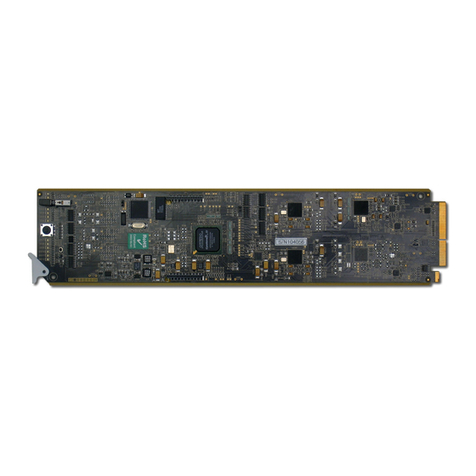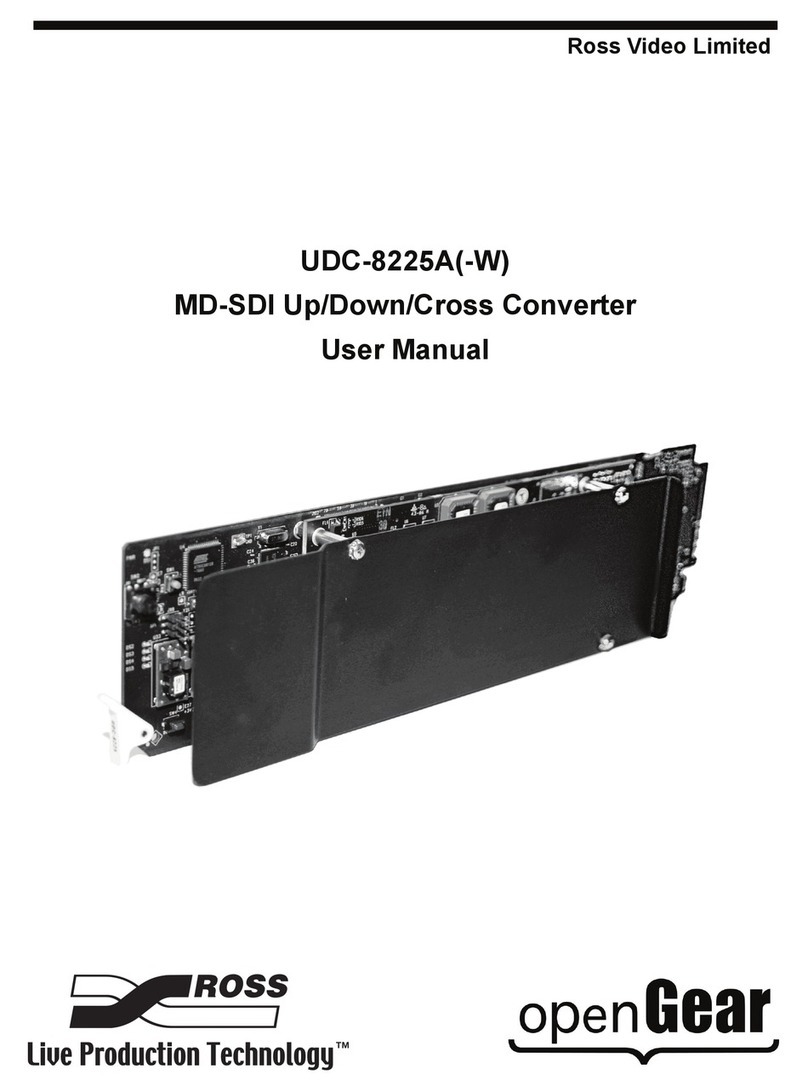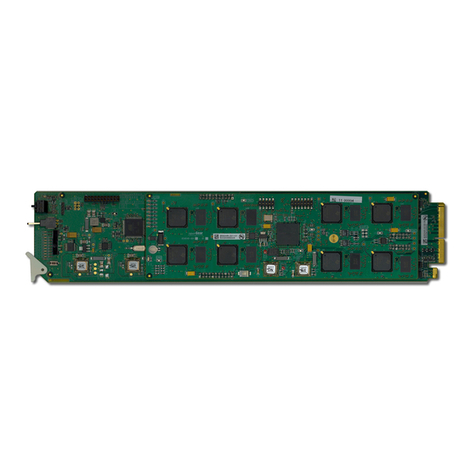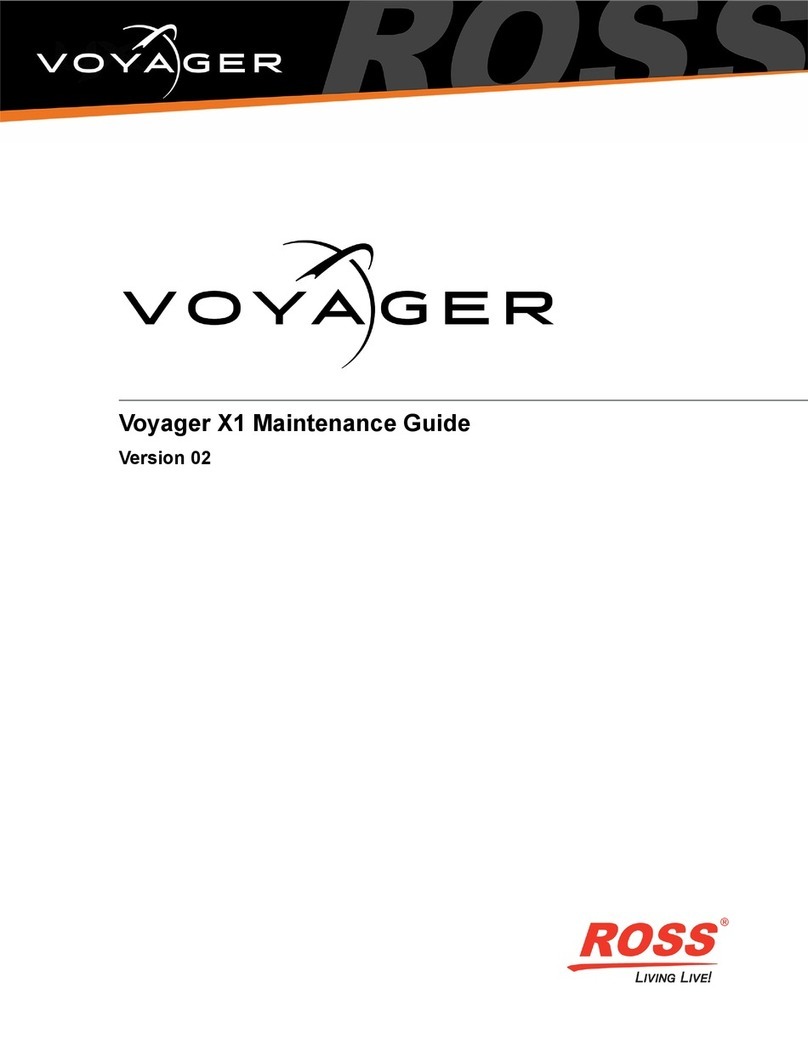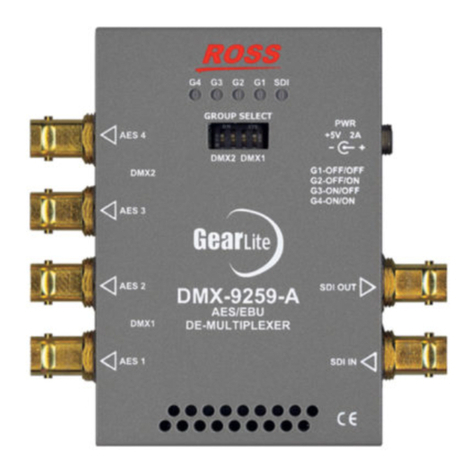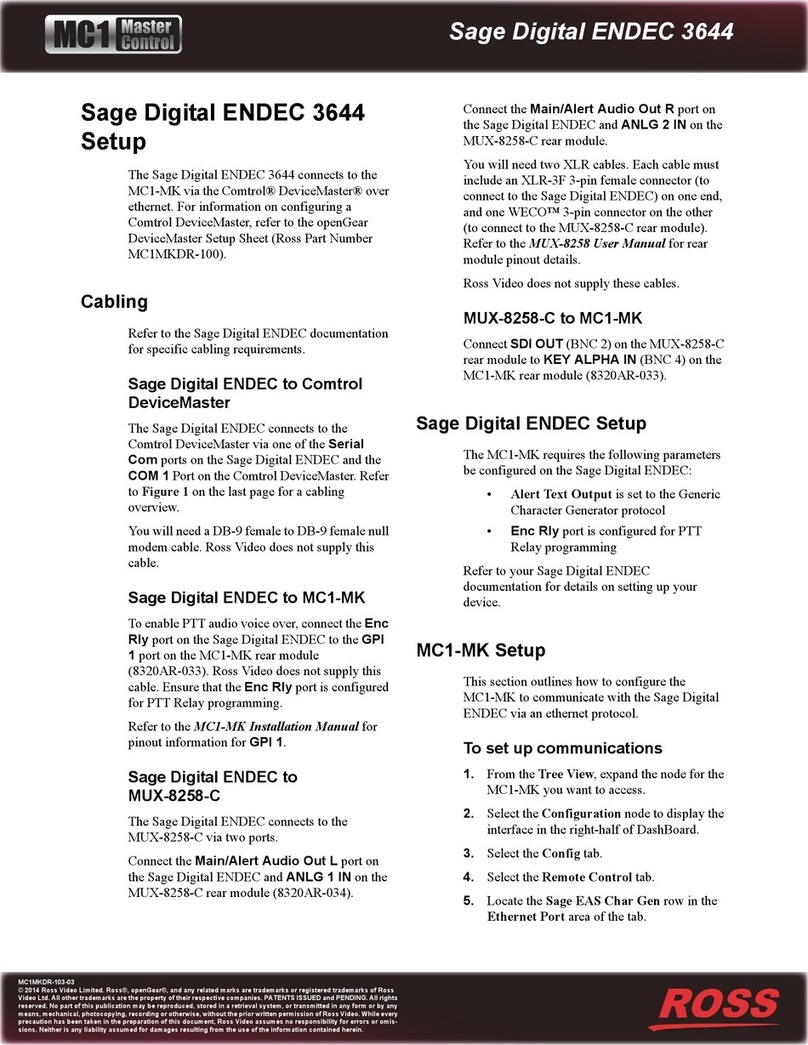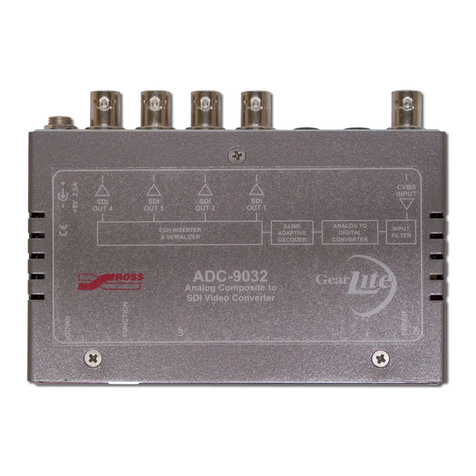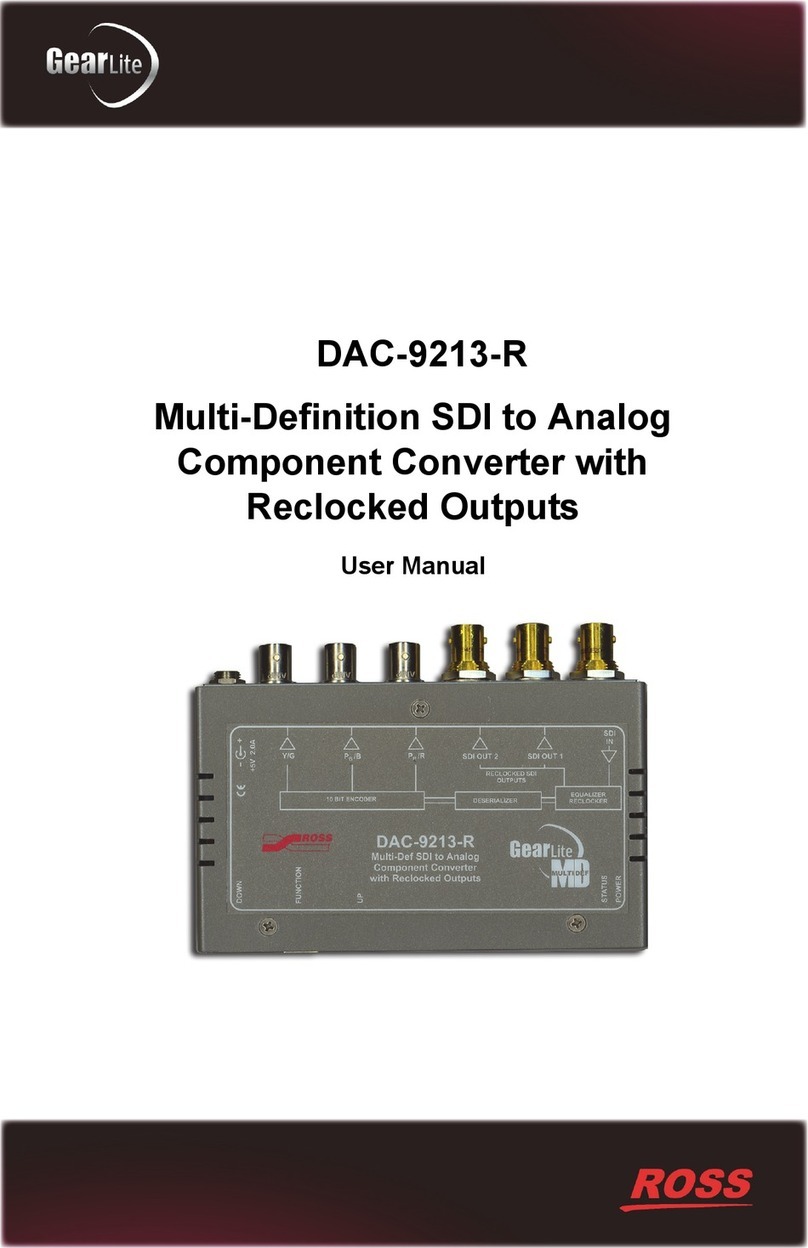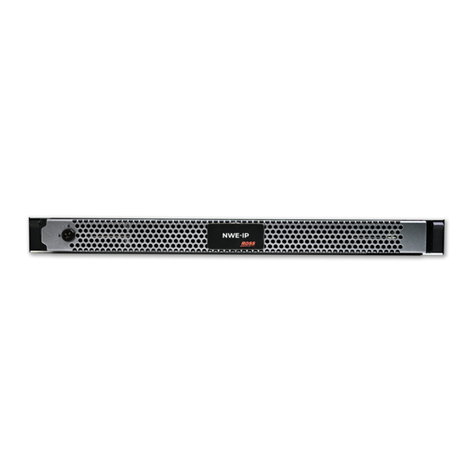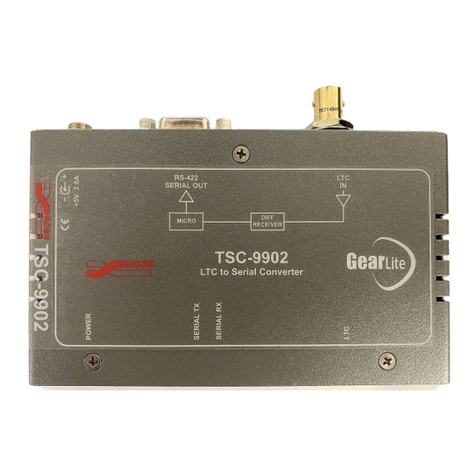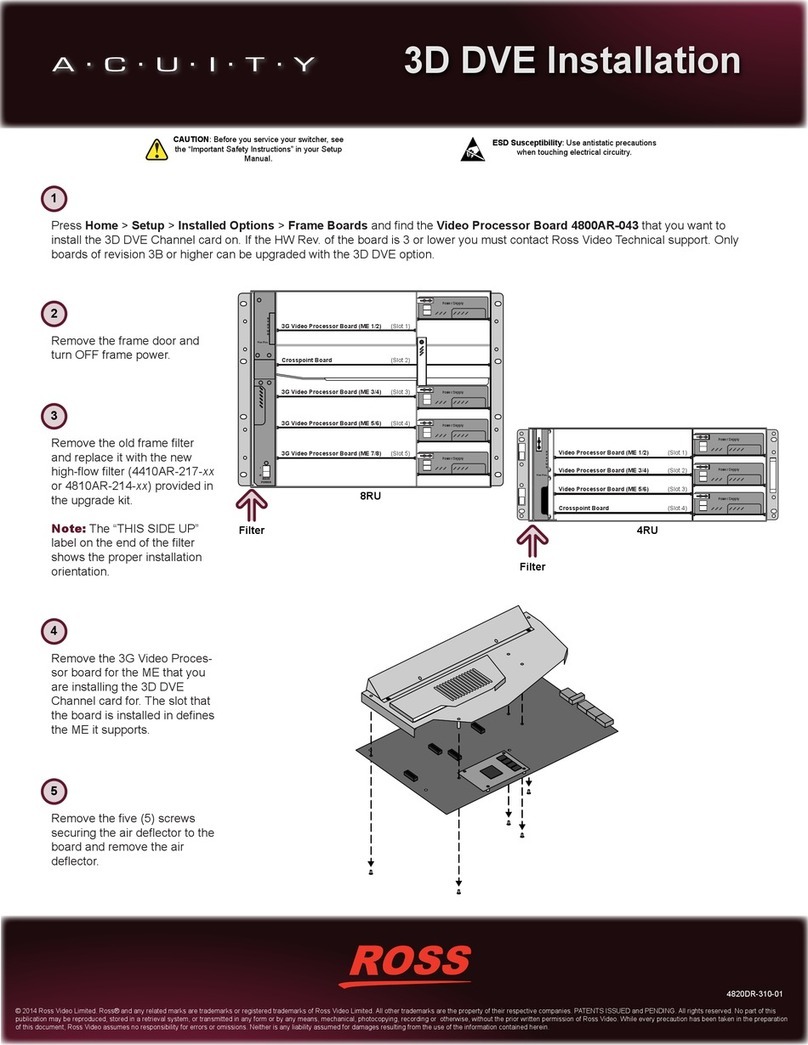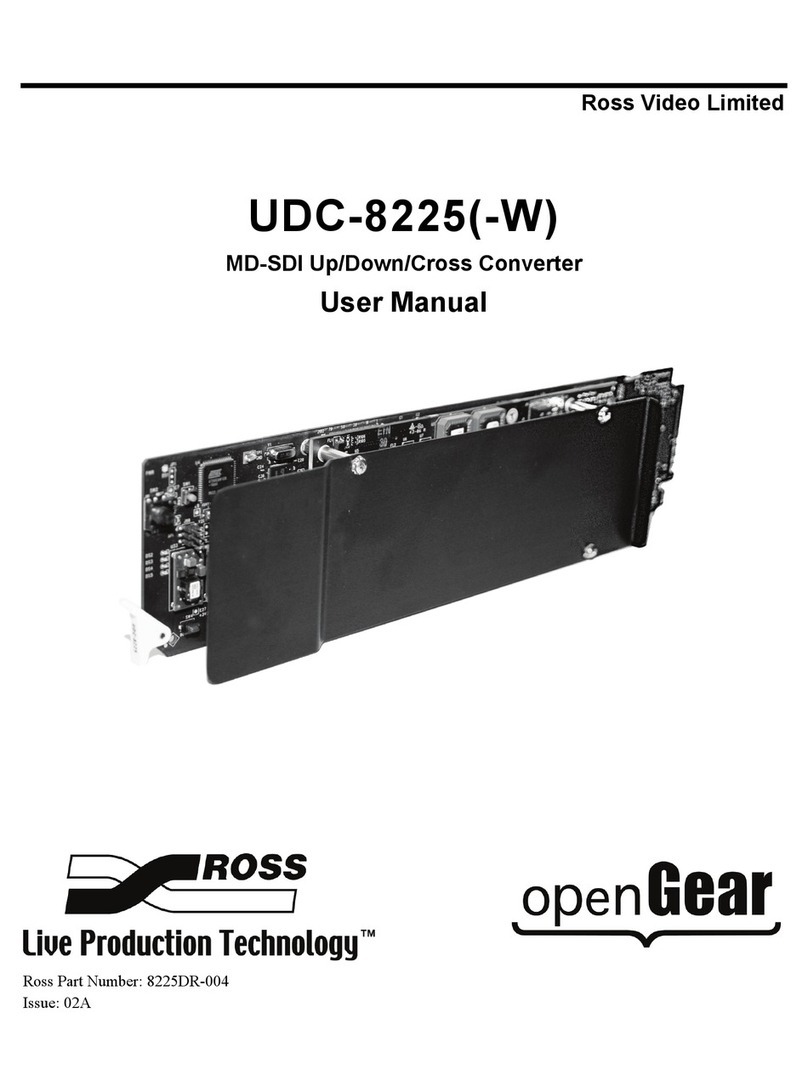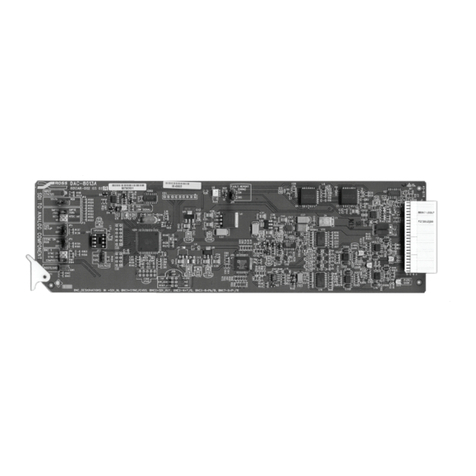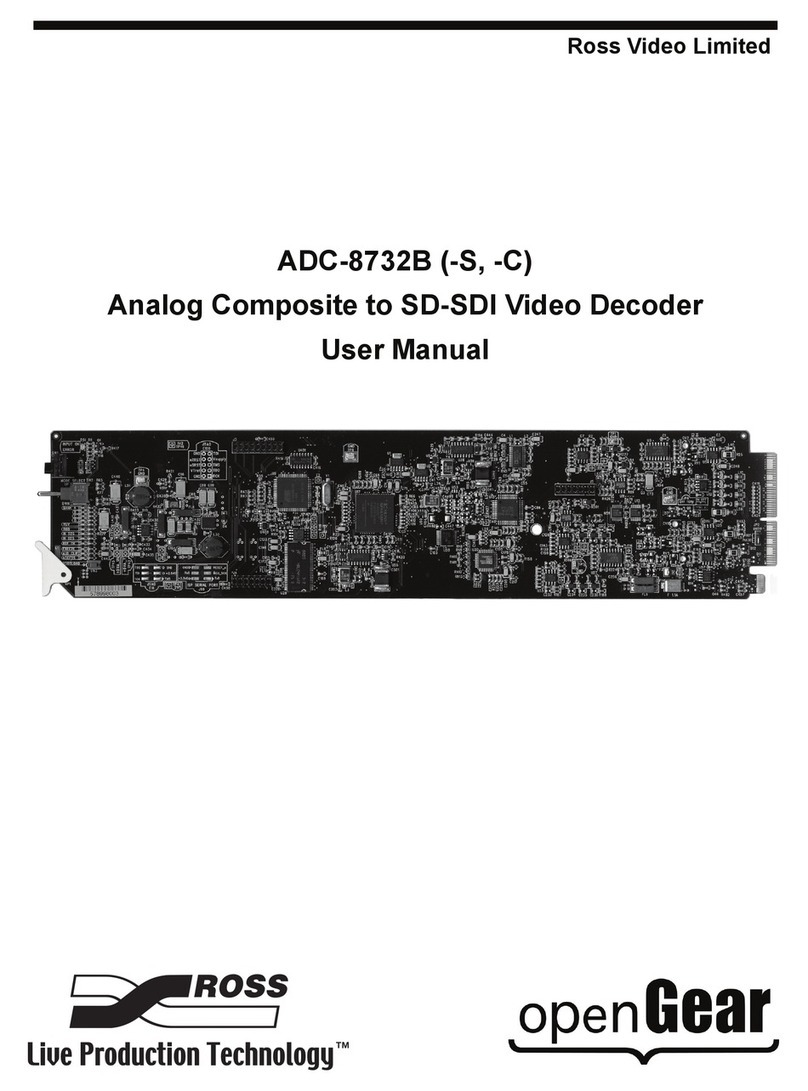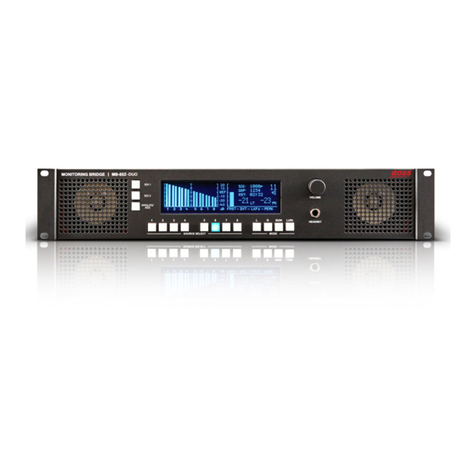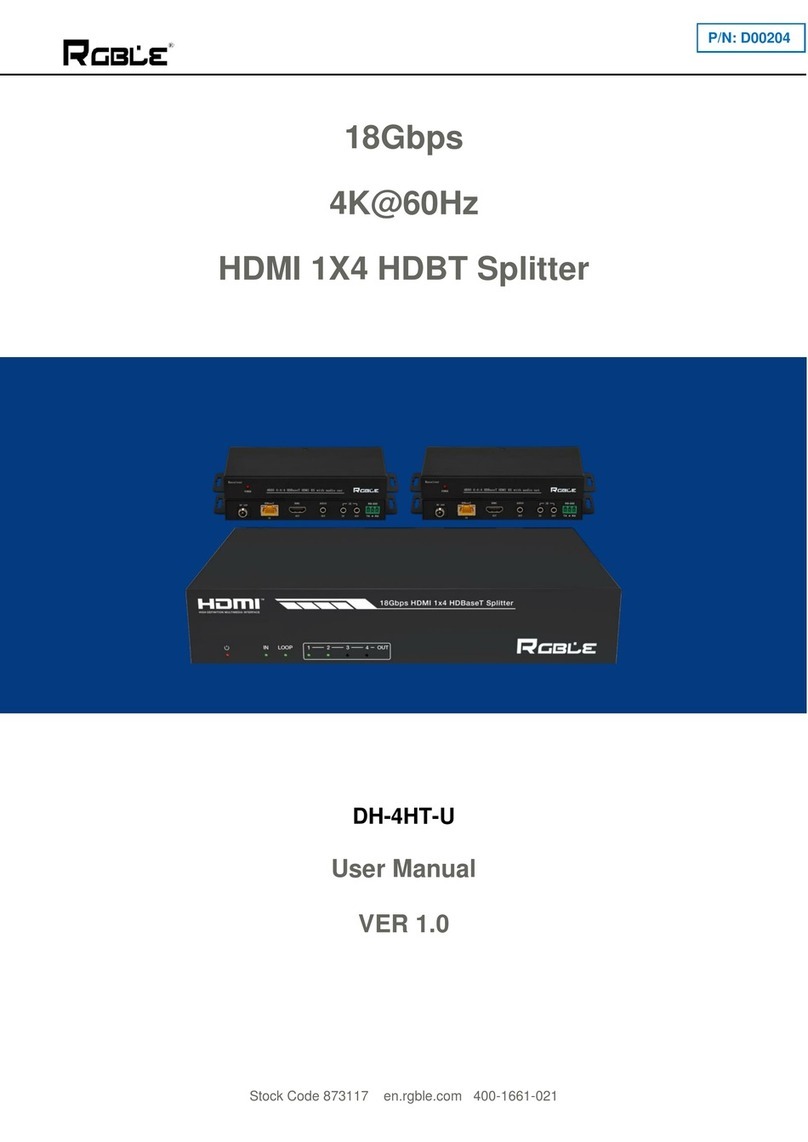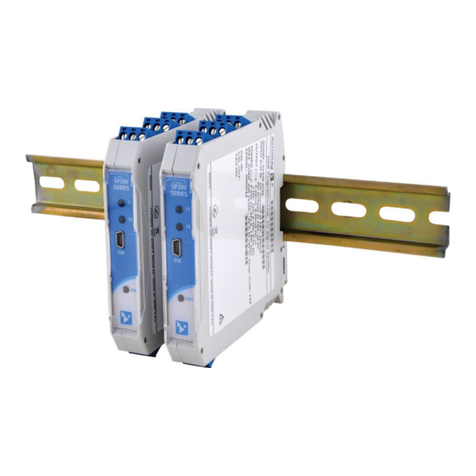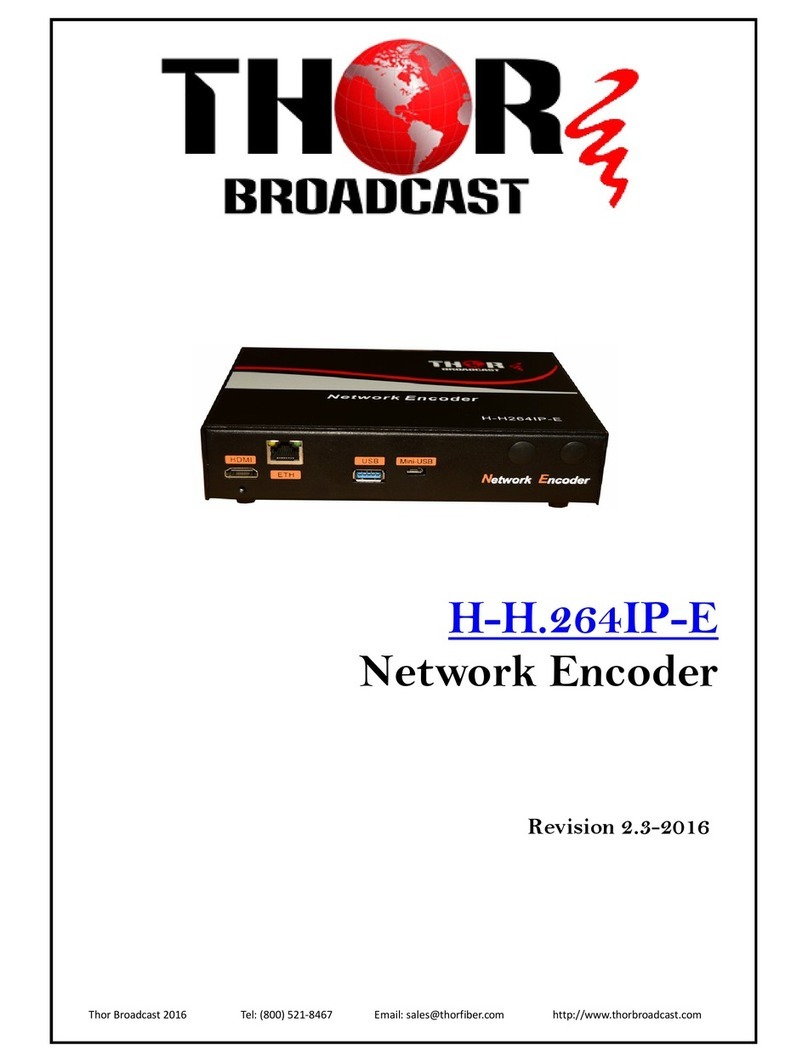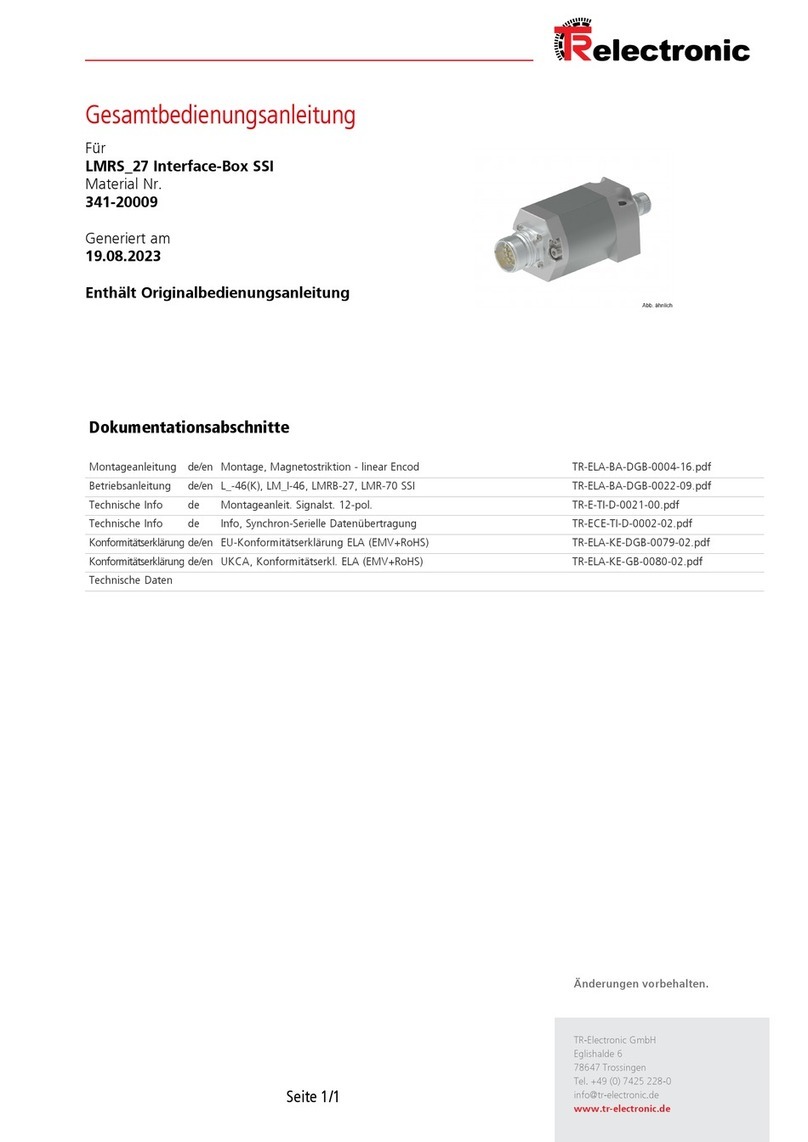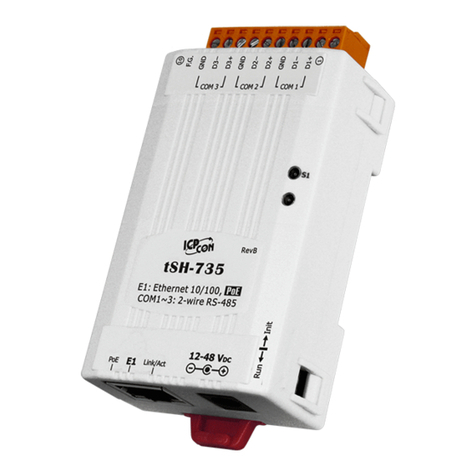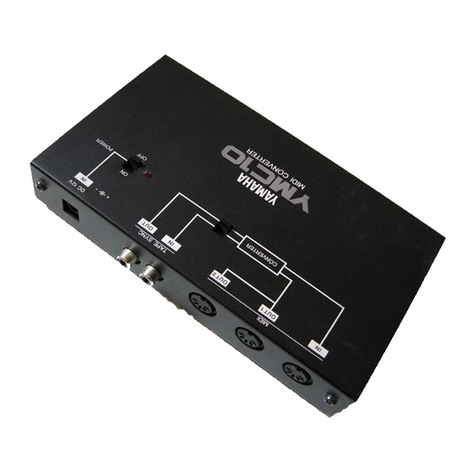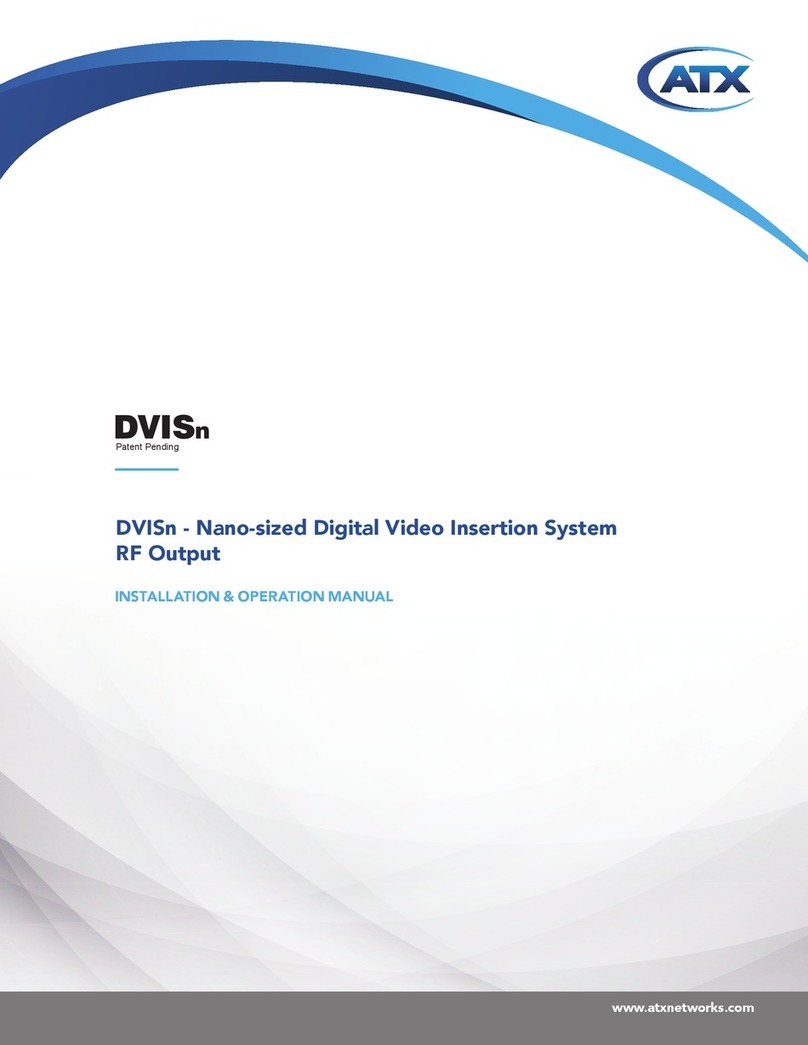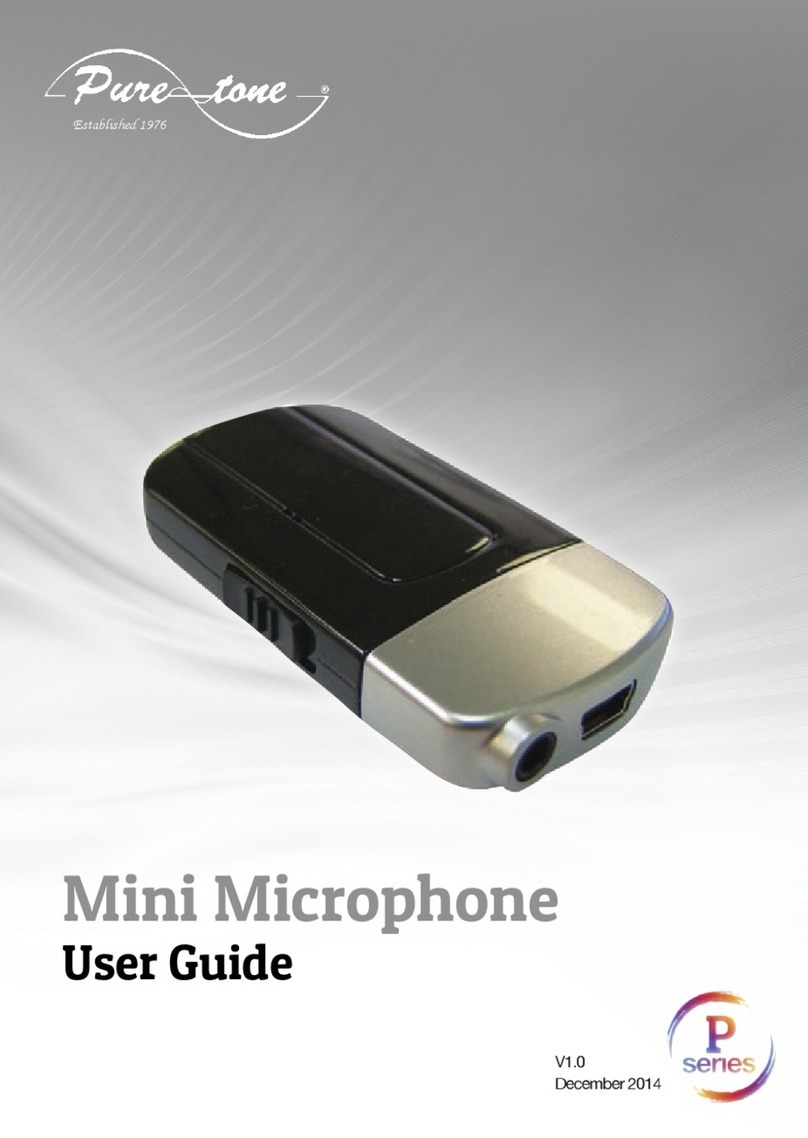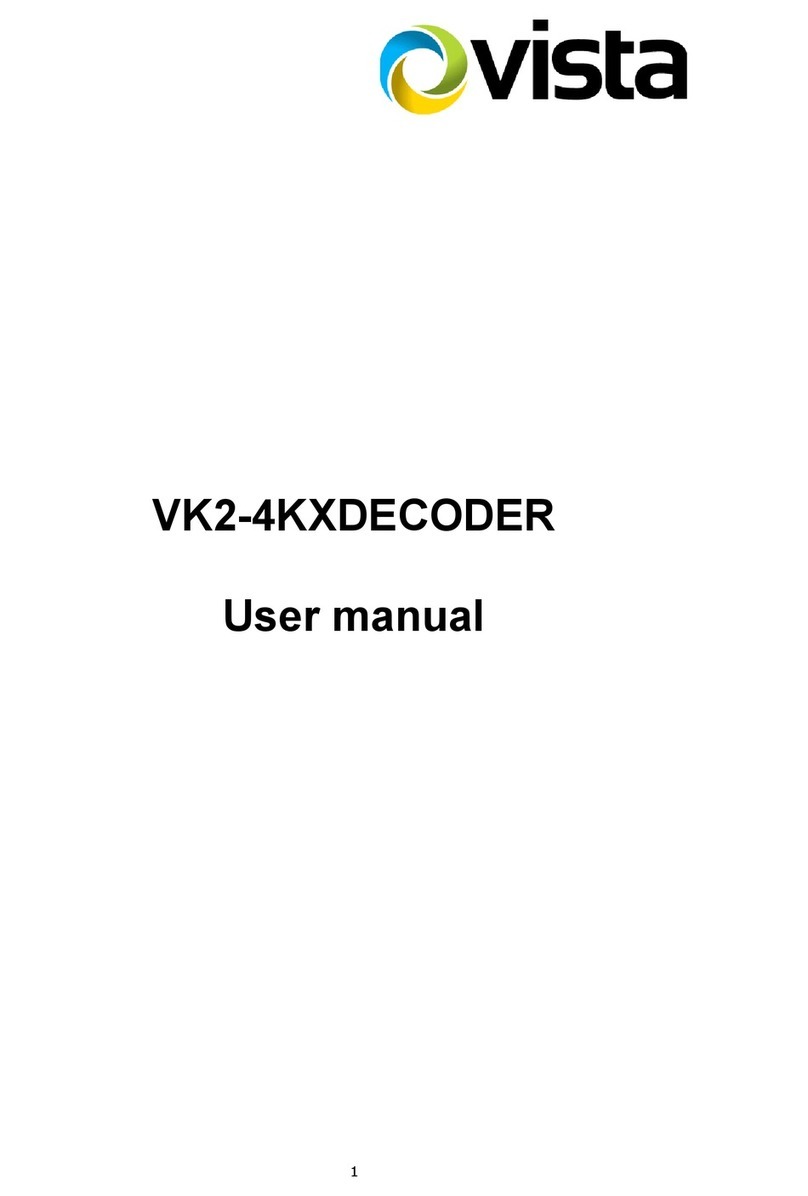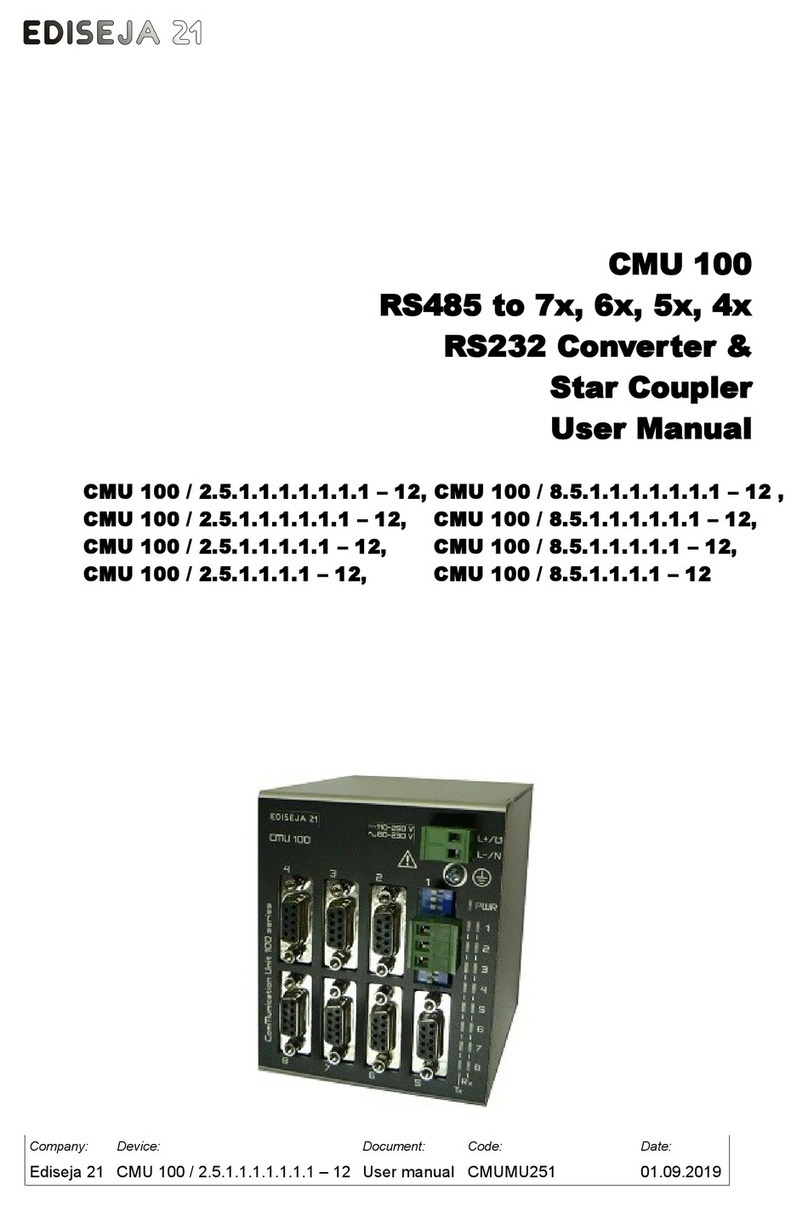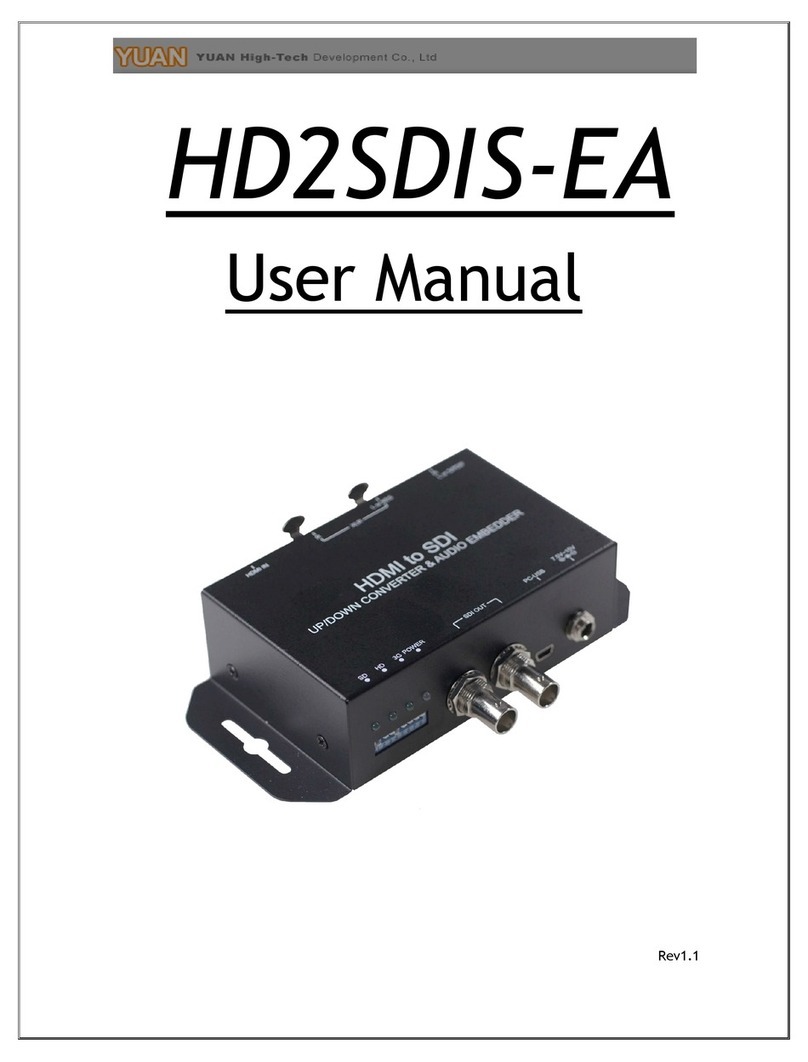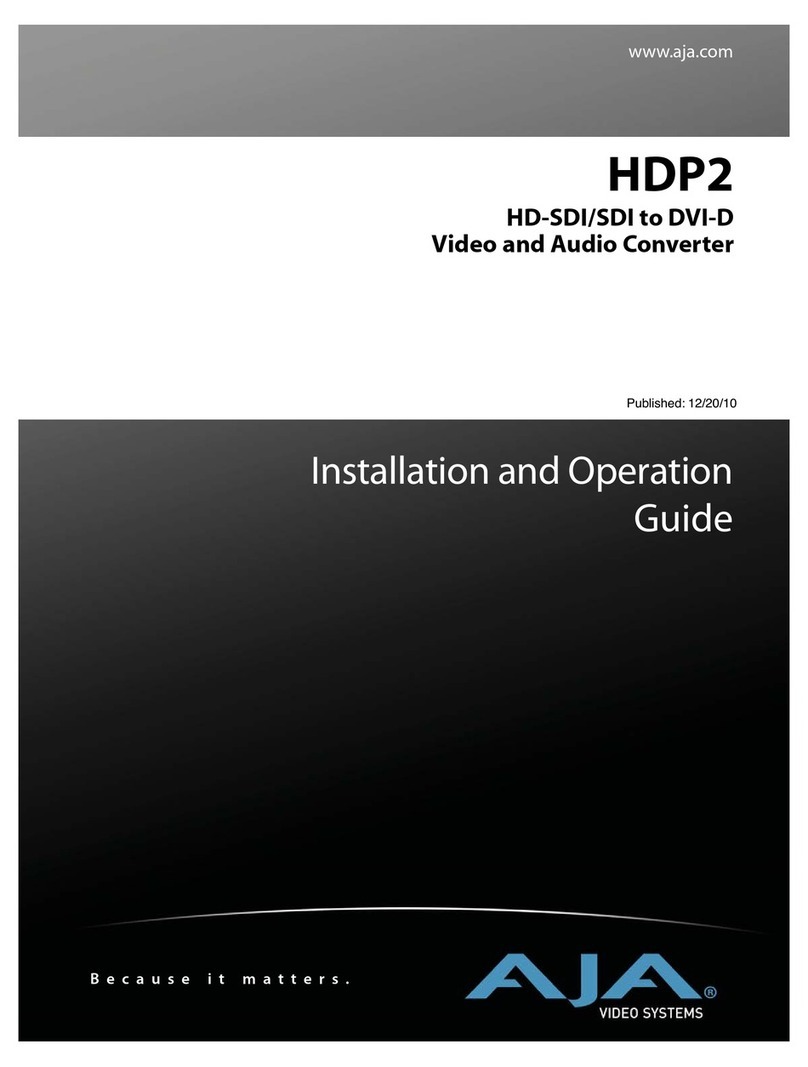
GPI-100 User Manual (Iss. 03) Installation • 2–3
Quick Start
Assuming you have a DFR-8300 series frame, two GPI-100 cards and two Rear Modules, the
following steps will get you started with VANC metadata insertion:
1. Connect the DFR-8300 series frame to your LAN. Refer to the DFR-8300 Series User
Manual and MFC-8300 Series User Manual for details.
2. Install DashBoard on a computer connected to the LAN. The DashBoard Control
System™ software and user manual are available from the Ross Video website.
3. Install each rear module in the frame, as described in the section “Installing a Rear
Module” on page 2-5.
4. Install each GPI-100 card into a rear module as described in the section “Installing the
GPI-100” on page 2-6. One card will be used to insert the GPIO triggers into the VANC
and the second card will be used to read the GPIOs from the VANC.
5. Connect a 292 or 259 signal to the SDI IN BNC on the rear module of the encode card.
Refer to the section “Cabling for the GPI-100” on page 2-7 for details.
6. Connect the SDI OUT BNC of the encode card to the SDI IN BNC of the decode card.
7. Launch DashBoard on your computer. It should automatically find your frame within a
minute or two.
Configure a GPI-100 as an Encoder
1. Click the “+” next to the frame name to show the cards in the frame, then double-click
the GPI-100 to be used as the encoder.
2. Select the Settings tab and set the Card Function to Encode. It is also a good idea to
give the card a meaningful name. This makes it easier to identify it in a frame which
contains many cards. Click Accept to apply these changes.
3. Select the GPIO Mask tab and select the boxes for all eight GPIOs. It will not matter if
you do not connect a GPIO to every connection because the connection will be open by
default. Click Save to apply this change.
4. Connect a GPIO source (for example, a switch) to one or more of the GPIO inputs of the
card as described in the section “Cabling for the GPI-100” on page 2-7.
Configure a GPI-100 as a Decoder
1. Click the “+” next to the frame name to show the cards in the frame, then double-click
the GPI-100 to be used as the decoder.
2. Select the Settings tab and set the Card Function to Decode. Give the card a name.
Click Accept to apply these changes.
3. Select the GPIO Mask tab and select the boxes for all eight GPIOs. Click Save to
apply this change.
4. Connect one or more of the GPIO outputs of the card to a GPIO controlled device. Your
GPIO source is now driving your GPIO controlled device through the VANC.
5. You must set the time for the log’s time stamp to be accurate:
• Select the Time tab and set the time according to the instructions in the section
“Setting the Logging Timestamp” on page 4-4.
• Select a Time Source (Timecode is recommended if it is available in the VANC).
• Set the other parameters if required for the Time Source.




















